Keinsmerwiel
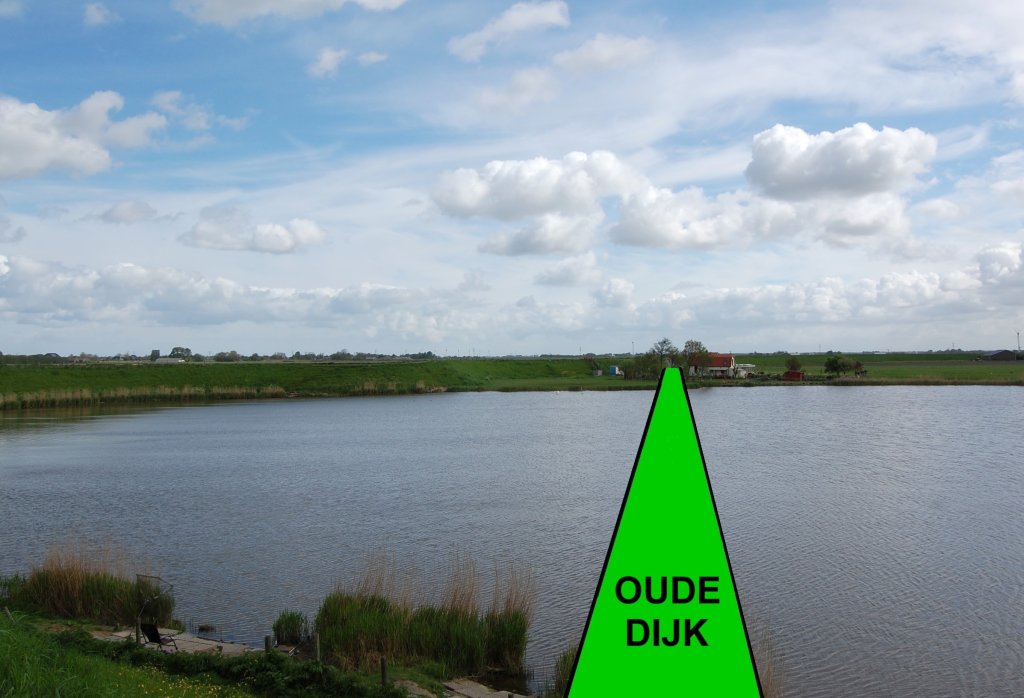
The Westfriese Omringdijk dates from the thirteenth century, but at that time people did not have the manpower, organization and resources to build a strong dike. As a result, the dike often broke during storm surges. The incoming water was sometimes so strong that it washed out a kolk hole several meters deep. We call such a whirlpool a wheel. Here we are at the Keinsmerwiel, named after the nearby village of Keinse. It measures 200 by 200 meters.
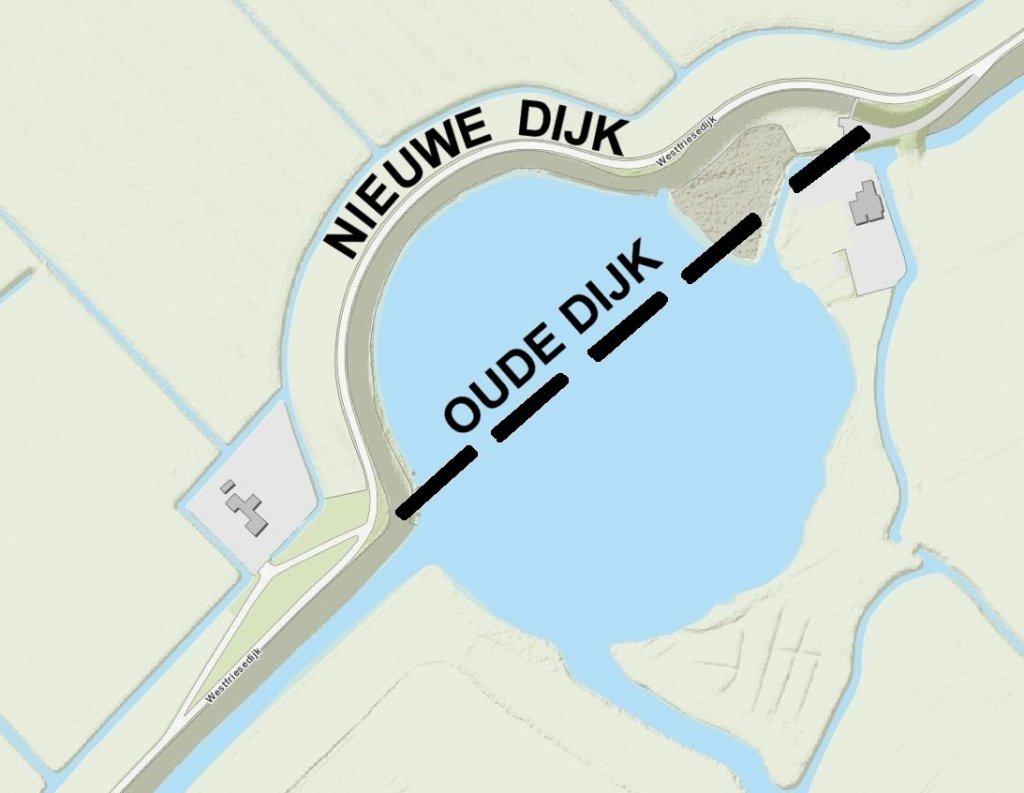
The Keinsmerwiel was so deep that it could not be closed. People therefore had to build a new piece of dike around it. Thus the originally straight Omringdijk got a twist. You come across such sudden bends in more places. The cause is usually an ancient dike breach.
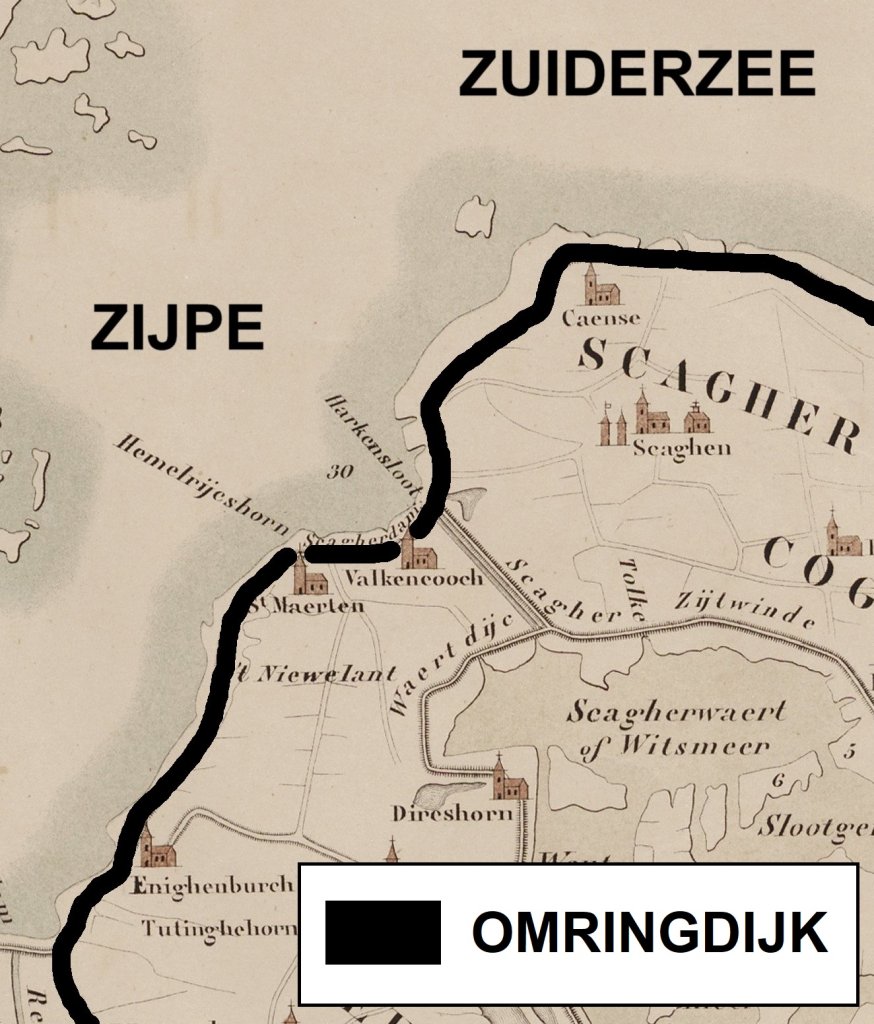
The Keinsmerwiel was created by a dike breach between 1200 and 1597. That year the Zijpe was permanently reclaimed. The Zijpe was a long, sandy basin, which was in open connection with the Zuiderzee. Attempts had already been made to dike the area - for the first time in 1552 - but twice the dikes had been destroyed by storm surge.
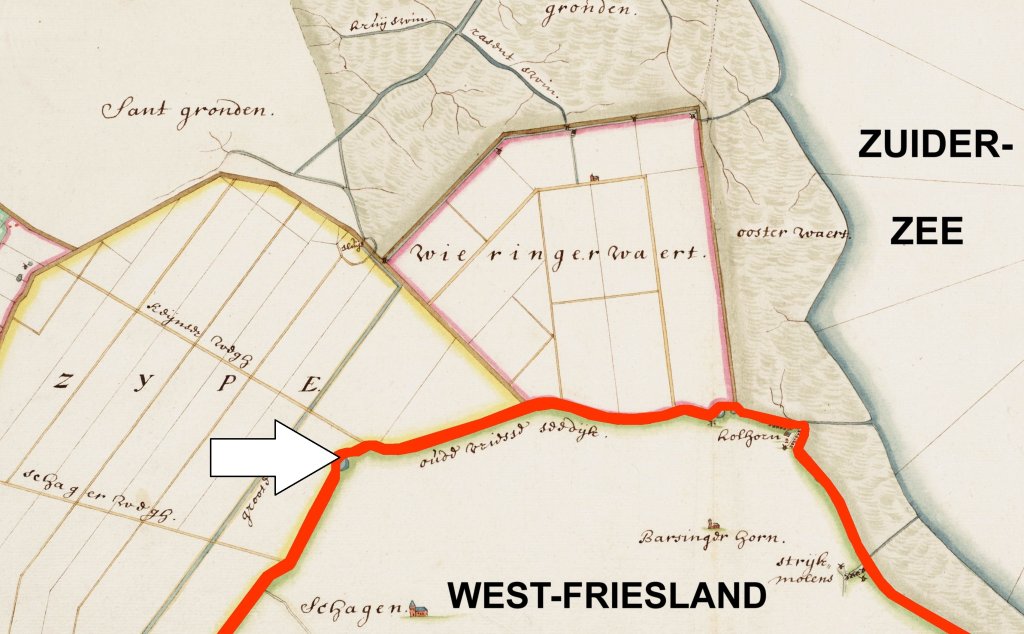
Up to Keinse (arrow on the Map) the Omringdijk was now shielded by the Zijpepolder, but east of the village the dike still faced the sea. This did not last long, for in 1610 the Wieringerwaard polder fell dry. From Krabbendam to Kolhorn, the Omringdijk (red line) was no longer a sea dike: almost twenty kilometers. This saved the water boards enormous maintenance costs.
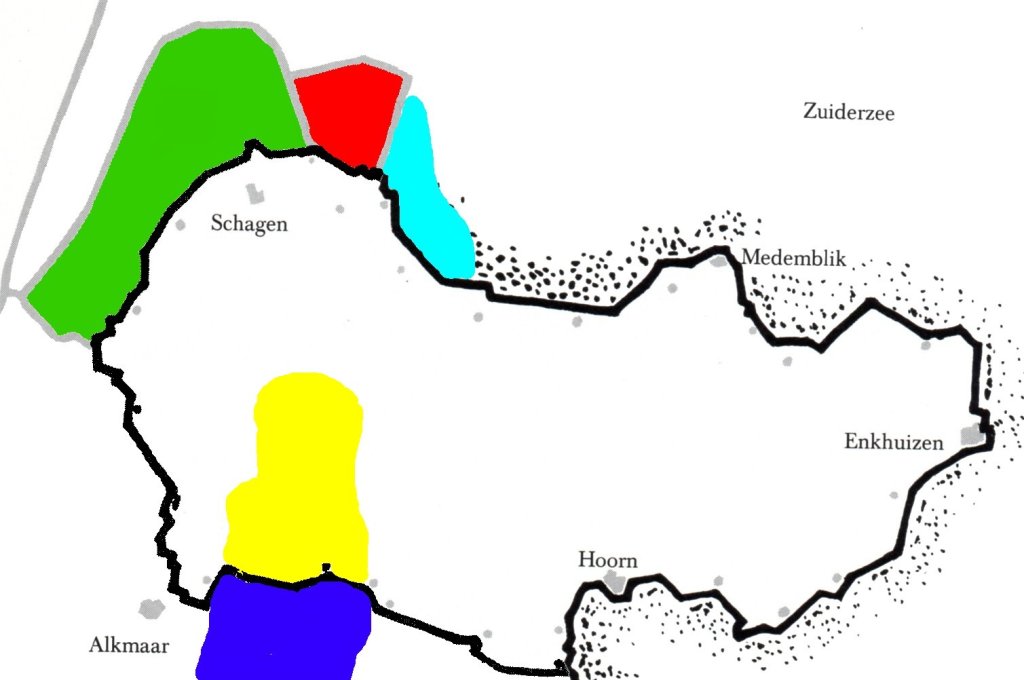
Four water boards managed the Westfriese Omringdijk. The two water boards located to the west, the Geestmerambacht and the Schager- and Niedorper Koggen, benefited from the reclamations. The reclamation of the Zijpe (green), Wieringerwaard (red), Heerhugowaard (yellow), Schermer (blue) and later the Waard and Groet (light blue) meant that their part of the Omringdijk was no longer tested by large surface waters.
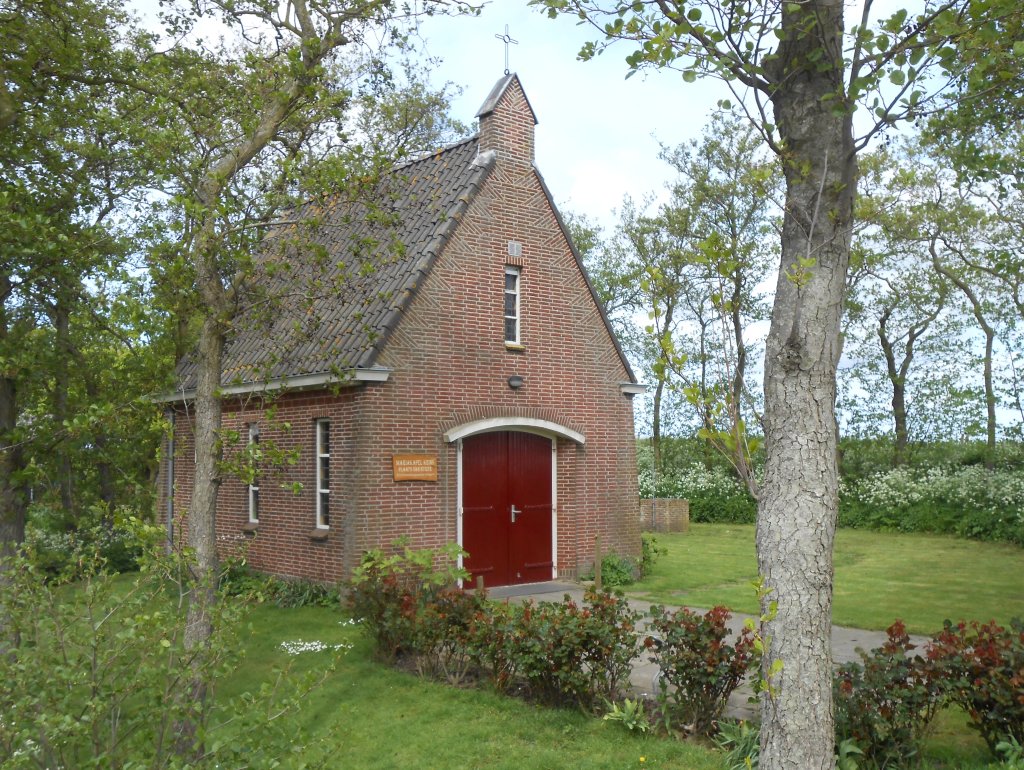
In 1519, when Keinse was still by the sea, a Marian chapel was founded near the village. It contained a statue of Mary that had washed ashore a few years earlier. Soon a real worship started. There were stories about beds that Mary had answered, and the water from the well was said to have healing properties. It was also the time of the rise of Protestantism. In 1566, the Iconoclasm broke out. The chapel did not escape: it was destroyed in 1586. The present building dates from 1956 and stands on the Omringdijk.
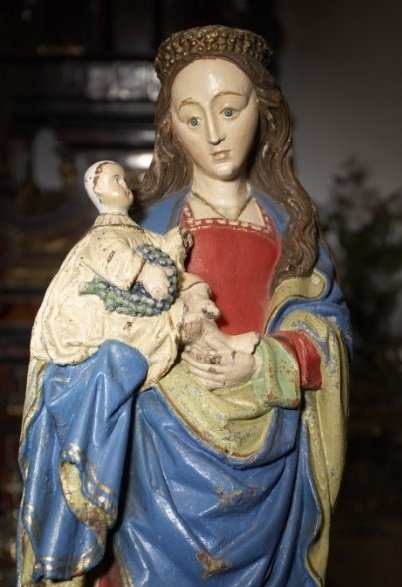
The statue of the Virgin Mary had been without a trace since the destruction of the chapel, until a family from Heerhugowaard brought a wooden statue, an heirloom, to the Westfries Museum in the 1990s. There it still stands. There is no telling whether this is the Mary of Keinse, but some are sure. They point to the power the 15th-century statue radiates, an energy present on so-called ley lines. The chapel and the well are at a junction of such lines.